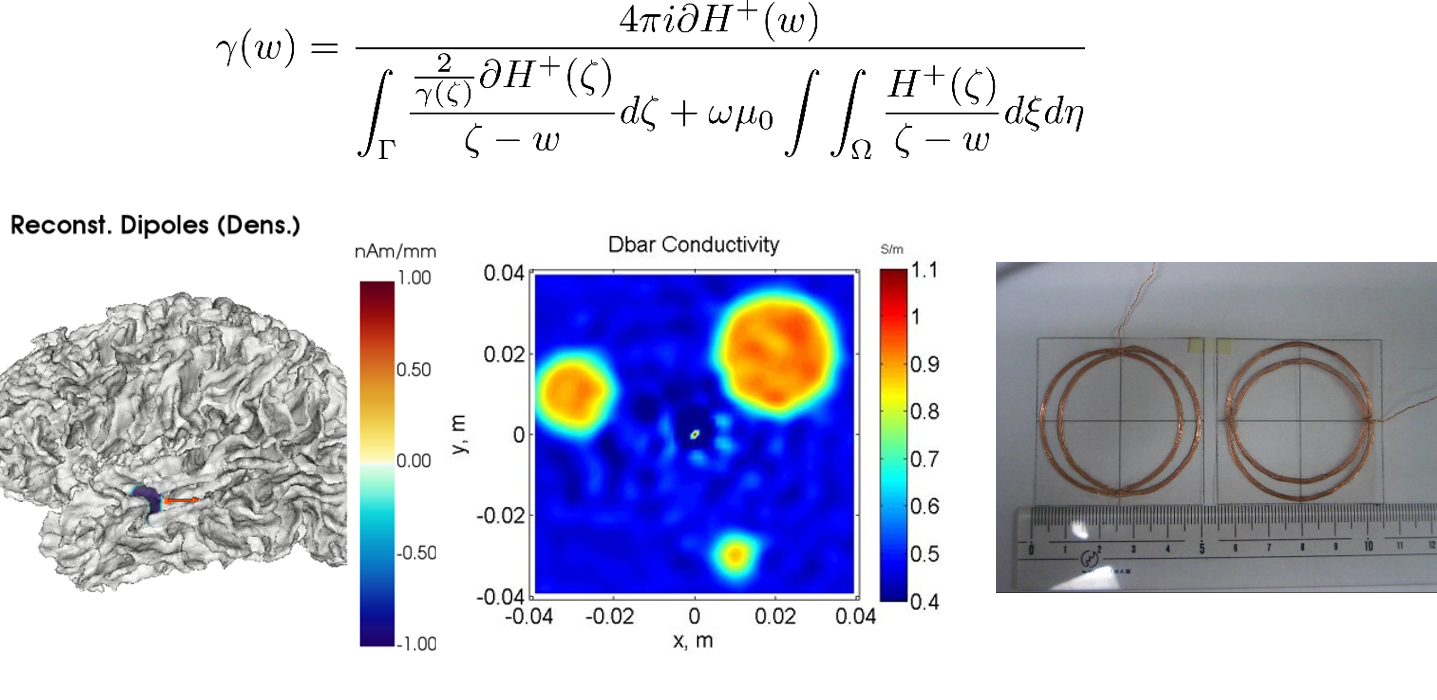Research theme
Inverse problems are problems wherein the law of causality is inverted to identify the cause of a phenomenon from its results. Non-invasive measurements in biomedical engineering are one type of inverse problem, in which unseen cancers inside human bodies or epileptic foci in human brains are located using measurements of electromagnetic fields. Non-destructive inspection of structures and materials in power plants is another significant example of an inverse problem, in which cracks or corrosion are identified from measurements of electromagnetic/ultrasonic waves.
In addition to estimating, designing the cause of a desirable results is also an inverse problem. In virtual reality, for example, designing physical fields such as ultrasonic waves is required to provide humans with artificial sensations or information. In biophysics, design and control of alignment of cells can be formulated as an inverse problem as well.
Our laboratory aims to develop unified mathematical theories as well as measurement methods for inverse problems applicable to this diverse range of fields.
In addition to estimating, designing the cause of a desirable results is also an inverse problem. In virtual reality, for example, designing physical fields such as ultrasonic waves is required to provide humans with artificial sensations or information. In biophysics, design and control of alignment of cells can be formulated as an inverse problem as well.
Our laboratory aims to develop unified mathematical theories as well as measurement methods for inverse problems applicable to this diverse range of fields.
Direct methods for inverse problems
In contrast to conventional methods for inverse problems, which are based on iterative algorithms, we have developed direct formulae that explicitly reconstruct solutions to inverse problems in terms of measured data. These formulae provide not only the mathematical foundation of the inverse problems but also practical algorithms that can give appropriate initial estimates for use with iterative algorithms. Another original aspect of our research is the development of novel sensors that directly measure essential quantities to be used as inputs for inverse problems. These algorithms and sensors have a broad range of applications, including medical imaging, such as the identification of epileptic foci from magnetoencephalography and electroencephalography, as well as imaging of electrical and mechanical impedance of human bodies from MRI measurements; non-destructive inspection of ferromagnetic pipes; searching for victims buried in rubble after earthquake; and indoor navigation in cyber-physical systems.Click here for more details.

Control and design of self-organized structures of active matter
We study mathematical control and design of self-organized structures of active matter represented by biological cells and biomolecules. In addition, we also aim to apply the mathematical design methods to tissue engineering by using micro/nanoengineering.Click here for more details
